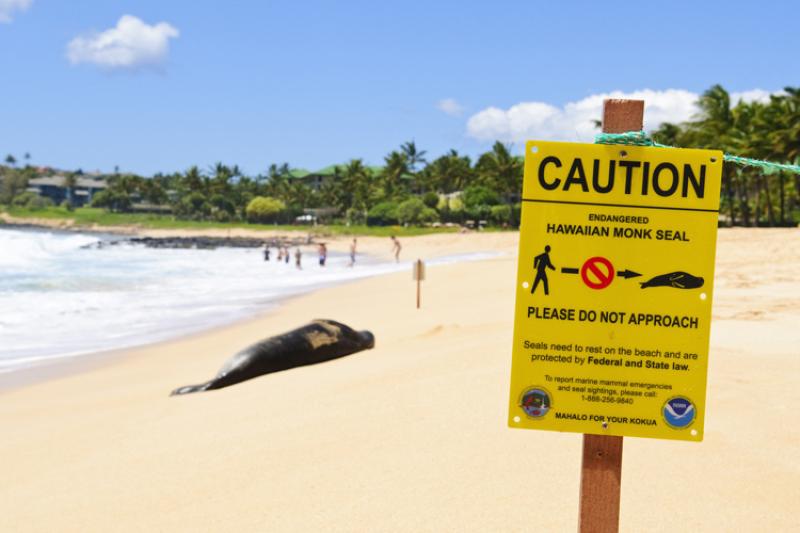Hawaiian Monk Seal Updates
Get the latest monk seal updates from NOAA Fisheries in the Pacific Islands.
Back to the Beach in 2025: Four Successful Seal Rehabilitations
May 12, 2025
Monk seals in need of the “3 Rs”—rescue, rehab, and release—have kept us and our partners busy this year! We’re happy to share that four endangered Hawaiian monk seals are back in the wild after receiving expert, life-saving care at The Marine Mammal Center’s Hawaiian monk seal hospital, Ke Kai Ola.
The seals suffered varying medical issues, ranging from malnourishment to physical injuries. Their chances of survival were grim without medical intervention. But thanks to collaborative response efforts and The Center’s medical resources and specialized care, the seals are healthy again and home in their native habitat.
With only about 1,600 Hawaiian monk seals left in the world, we take our responsibility to recover the population very seriously. Rehabilitations like these move us one step closer to our goal of removing Hawaiian monk seals from the endangered species list.
Learn more about these four seals with a new outlook on life!
DT46 and DT48
Our seasonal field camp staff rescued monk seal pups DT46 (male) and DT48 (female) while conducting monk seal research in Papahānaumokuākea Marine National Monument. The pups were underweight, and their chance of survival through the winter was less than 1 percent. The Center treated them for malnutrition and gastrointestinal parasites. Our field camp staff released them this month on Tern Island in Papahānaumokuākea Marine National Monument. The pair spent a short time exploring their surroundings before going for the water. Maybe one day they'll run into their recovery companion DT12. Also an underweight pup, she was rescued with the pair and released back to Papahānaumokuākea in 2024. Based on signals from her temporary satellite tag, DT12 has been broadly exploring her surroundings.
Learn more about DT12’s journey
R419
R419 is one of the more severe monk seal medical cases we’ve seen recently. An O‘ahu community member reported the ailing seal, expressing concern about his appearance. When we collected him from the beach, he was severely underweight. The Center treated the male for multiple, infected injuries, some caused by another male seal. R419 had several large abscesses on his back and many smaller ones. He also had traumatic injuries to his right front flipper, causing the loss of a partial middle digit and fractures of 4 of 5 of his digits. The Center treated R419 with antibiotics, deworming and pain medications, and dietary supplements. We and partners released R419 in April. R419 made a remarkable recovery—gaining approximately 100 healthy pounds during treatment!
RS52
Last but not least is the juvenile male monk seal RS52. We and partners rescued RS52 on Maui after observing that he was losing weight at an alarming rate. The Center staff treated RS52 for malnutrition and gastrointestinal parasites. We jointly released him back on Maui in January after he received a clean bill of health. Since his release, RS52 has been sighted along the south shores of Maui. In April, he was also spotted on the island of Lāna‘i, which is where he was born in 2023.
Back to Top ⤒ | More Information
Archived Updates
More Information
More Information
Viewing Marine Life
Watching marine animals in their natural habitat can be a positive way to promote conservation and respect for animals and their environment.



